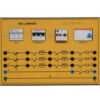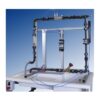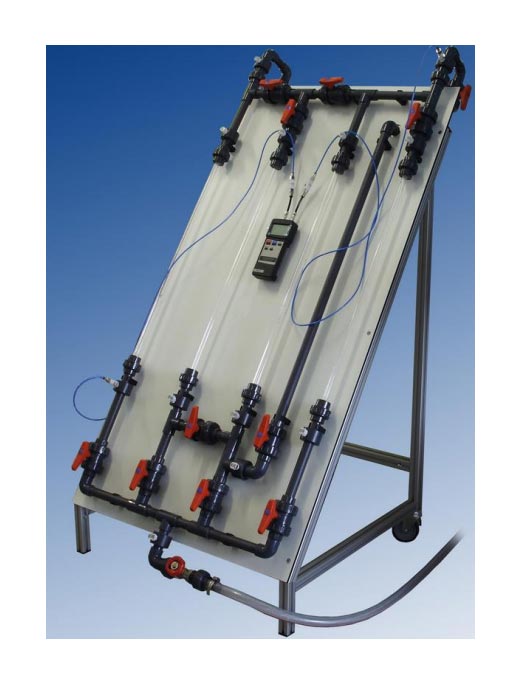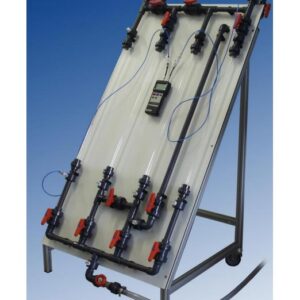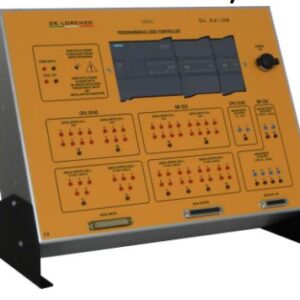TRAINING OBJECTIVES
• Piping network modeling to design and calibrate every component to predict the flow rate through each segment of pipe.
• Measurement and testing of load losses of different pipe work arrangements in series.
• Calculation and testing of distribution flow through several piping systems in parallel.
• Calculation and testing of distribution of flows and their directions in mesh piping system.
• Analyze the system behavior when another pipe in parallel is placed.
TECHNICAL DATA
Pipe sections : Inner diameters
• 1x pipe: 700mm Ø14 mm
• 1x pipe: 700mm Ø10 mm
• 2x pipes: 700mm Ø9 mm
• 1x pipe: 700mm Ø6 mm
Manometric measuring points
• It has 12 pressure measuring points.
• In every piping segment the pressure measuring point is 40mm away from three pieces joint.
Manometer
• Electronic differential pressure gauge
(±7000mbar)
STUDY OF FLOW NETWORKS
The system reflects at a scale level the problem that usually appears calculating pressure and flow in pipes.
These pipes generally have different diameters and lengths and are interconnected.
These system’s shapes, such as in series, parallel or mesh, can severely complicate the calculation.
These interconnections are known as flow networks.
As an example, it could be like the water-supply network of a town or the fire-protection system in a building.
It is important to understand the behavior of these pipes, considering the pressure and flow for a good working design.
Thus, for example, applying system modeling, it is possible to predict the flow rate through each segment of pipe.
Moreover it is possible to realize experiments that allow to emulate the behavior of the flow networks in different conditions.
The module consists of a number of transparent tubes with different diameters and a number of valves placed in specific points of the network. It features fast connections and valves.
These allow a quick and easy exchange of pipes and several network configurations for exercise purposes.
The flow measurements can be done using the volumetric tank of the hydraulic bench (required). It is also possible to study the relationship between pressure loss and fluid speed.





